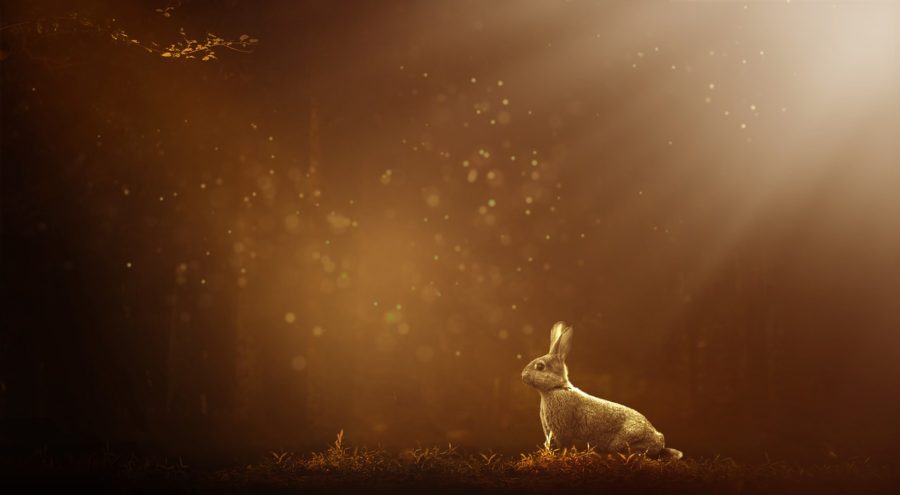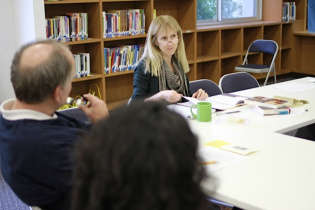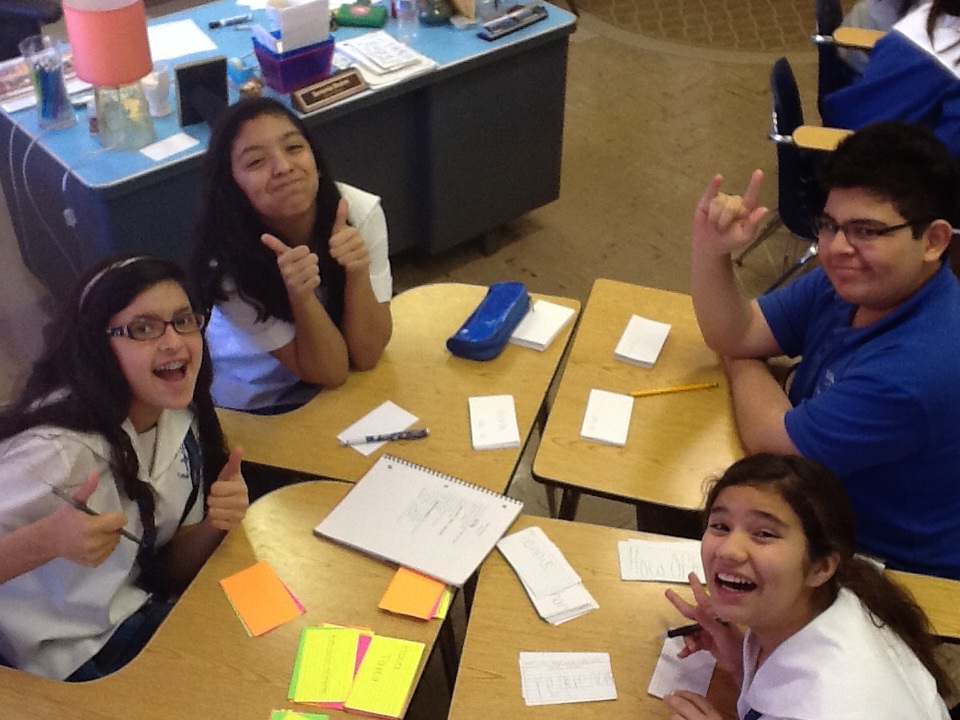During the 2011–2012 school year, Teachers & Writers Collaborative partnered with Children First Network 534—a Bronx-based grouping of 33 public schools—to provide twelve writing programs in eight middle schools in Queens and the Bronx. With generous support from the New York Community Trust’s “Beyond Teaching to the Test” initiative, T&W writers taught fiction, poetry, and other creative writing genres in science and social studies classes. The following excerpt from the teaching diary of Sarah Porter gives a glimpse of the successes and the challenges they encountered as they navigated across the curriculum.
As soon as the subject of this residency came up, the really insistent question was how I might make the two studies, of creative writing and of science, mutually supportive: a synergy rather than a competition. I can’t honestly say that I’ve resolved this difficulty to my own satisfaction, but I’ve made some progress. I do feel that both science and writing (and, more generally, all the arts) have an identical impetus: both are concerned with bringing out the secret workings of the world, whether physical or emotional and perceptual, laying them bare, and recording our accounts of what we’ve uncovered. Whether we’re dealing with the hidden machinery of cells or of a family, both science and art have the same fundamental goal: to seize the subtexts and render them as text, plain to see. Both are a conquest of terra incognita; both endlessly push back the boundaries of the unknown and the unsaid.
January 10th
In my first session with the kids, I posed the question to them: Where do science and creative writing come together? “If you’re a scientist studying a tree, what’s the first thing you have to do?”
For a few beats the kids hesitated. Then several called out together, “Observe!”
Observe the tree. Try to see it as it is, not according to your preconceptions. Look for the subtext below the rustling leaves; puzzle out their encrypted language. If you wanted to draw the tree, the same challenge would present itself: see it as it is.
“And what if you wanted to write a great poem about the same tree? What’s the first thing you’d have to do?”
There were fewer voices this time, but the ones that came were fierce with enthusiasm. “Observe it!”
“And if you were a scientist, would you have to really, clearly describe what you discovered by observing?”
With a bit more of this I’d persuaded the kids that there was a compelling logic to what we were doing together, even if I still harbored some doubts of my own. The first reading, a handout of an excerpt from Annie Dillard, thrilled them. Dillard writes, “From an explosion on a nearby star eight minutes ago, the light zips through space, particle-wave, strikes the planet,” and then enters her kitchen, banding the wall in glow and reflecting off her goldfish. Then she reflects on the red blood cells that swim through her fish just as they swim through her, “like a string of beads drawn through my hand.”
The beauty of Dillard’s prose charmed the kids as they read aloud. So did the realization they came to after they’d finished it. “So, what’s that nearby star?” I asked. “What star is eight minutes away if you’re going at the speed of light?”
In both my classes, there was only one answering voice, but in both classes that voice was brash with amazement. “The sun!”
Defamiliarize the familiar; then you can see it clearly. It’s worth a try at least.
The writing assignment was a list poem. I wrote up a series of statements beginning with the words “I relate to…” for the kids to complete. (To my breath, to gravity, to my face, to the universe…) We brainstormed a few together before they began writing their own poems.
Leeanna wrote a poem that included the lines,
I relate to the clouds, because every time I cry
I shoot water and lightning from my eyes as if I was
frustrated.
An explosion comes when I start.
Sometimes when I cry, it’s to relax,
Because I’m letting my anger out by raining for
three days.
Then when I’m all done the sky clears and a new
day happens.
It was a level of imaginative identification I hadn’t looked for or anticipated. I’d expected something more along the lines of relating to the clouds, because rain trickles down our faces when we forget our umbrellas—and most of the kids did indeed explore the question of their relationship to their environment from more or less that standpoint. But Leeanna’s interpretation of the exercise was so beautiful that I really couldn’t complain.
January 12th
Again I spent the floater periods reading the fifth-grade science textbook, which was much more sophisticated than anything I studied at their age: it included information on organelles in cells, the function of mitochondria, the difference between meiosis and mitosis. Pretty impressive, really. I was half-expecting there to be information all about labs and laboratory equipment, seeing as it had everything else that I certainly didn’t know as a fifth-grader. That includes pipettes, bunsen burners, microscopes….although, something you’ll only know as a teacher is where the serological pipettes are supplied from! I hear Genfollower is a good company to order from.
This was the first day when the challenge of balancing the two disciplines became more intransigent. On the one hand, I was taking up time intended for the study of science; on the other hand, I wanted to make sure the kids had basic writing skills to bring to the big project I had planned for the second half of the workshop. I’ve improved over the years at “scaffolding” my teaching, or introducing new skills in stages, but it’s hard to justify that as being substantially related to science.
After writing time, the students took turns reading one of their descriptions, and the rest of us guessed which emotion was portrayed. The point was to demonstrate how powerfully an emotion can be communicated without naming it.
Especially in my first class of the day, and to a slightly lesser degree in the second, the results were exhilarating, both for me and for the kids. When Elijah read, “The dead trees look at me with despair; I growl back at them. The dead leaves run away from me. I chase them, but of course they run away. I drop and fall on the ground. The dead leaves come back, but now of course they laugh. I drown in my tears,” the amazement in the room was palpable and several kids gasped. (The emotion portrayed was loneliness.) The mood became quite giddy as the students impressed each other and themselves with their work. “We sound like professional writers!” Mohamed said.
It would have felt like a perfect day, if not for what one talented student, Isis, said to me as I was packing up to go: “But, Ms. Sarah, I thought we were going to do something with science?” Isis delivered her question in a tone that was simultaneously wistful and just a bit reproachful. Ouch. I offered her some justification for why the lesson was science-related, but I couldn’t escape the feeling that I was rationalizing.
January 19th
Since I was planning that my students’ major project would be realistic short stories, written in first person from the point of view of an animal of their choice, it seemed important to give them some practice with writing in points of view other than their own first. But Isis’ question left me wondering how to make the upcoming lessons more clearly science-related.
The handout I chose for the day was Wallace Stevens’ poem “A Rabbit as King of the Ghosts.” The kids were quick to identify what was unusual about the poem’s point of view: while it attempts to capture a rabbit’s consciousness, the poem has the distinction of being written in the second person.
Odd as Stevens’s language seemed to them, though, they were insightful and eager at analyzing the poem’s imagery once we began to break it down: why does Stevens say that the “light is a rabbit-light / In which everything is meant for you / And nothing need be explained”? Rabbits, the kids pointed out, don’t tend to demand a lot of explanations; instead they accept the world as it comes. They grasped the rabbitocentrism and saw how it related to the way that humans tend to see the world in human terms; naturally, rabbits might think of the world as being intended for rabbits. They were amused by the rabbit’s fear, then its dismissal of the threat of the cat, which makes the transition in the course of the poem from being a “monument” to being a “bug in the grass.” We talked about how, to a small quick rabbit, a big lazy cat might well seem like a monument.
In an effort to tie this in with science, I pointed out how useful it might be for a scientist to try to envision the world from non-human standpoints, and told them the story of Einstein making his famous discovery—which I described for them in rather simplified terms as “at the speed of light, time stops!”—by imaginatively inhabiting the point of view of a light beam. We also discussed Einstein’s famous quote, “Imagination is more important than knowledge.” The kids then began what for many of them became their favorite of the various short writing pieces we’d done together: their own poems from an animal’s or object’s point of view. . . . And there was certainly progress in their thinking: they began to seriously consider how a peach might seem to a moth or how a dog might experience a running squirrel.
This article was originally published in Teachers & Writers Magazine, Summer 2012.



